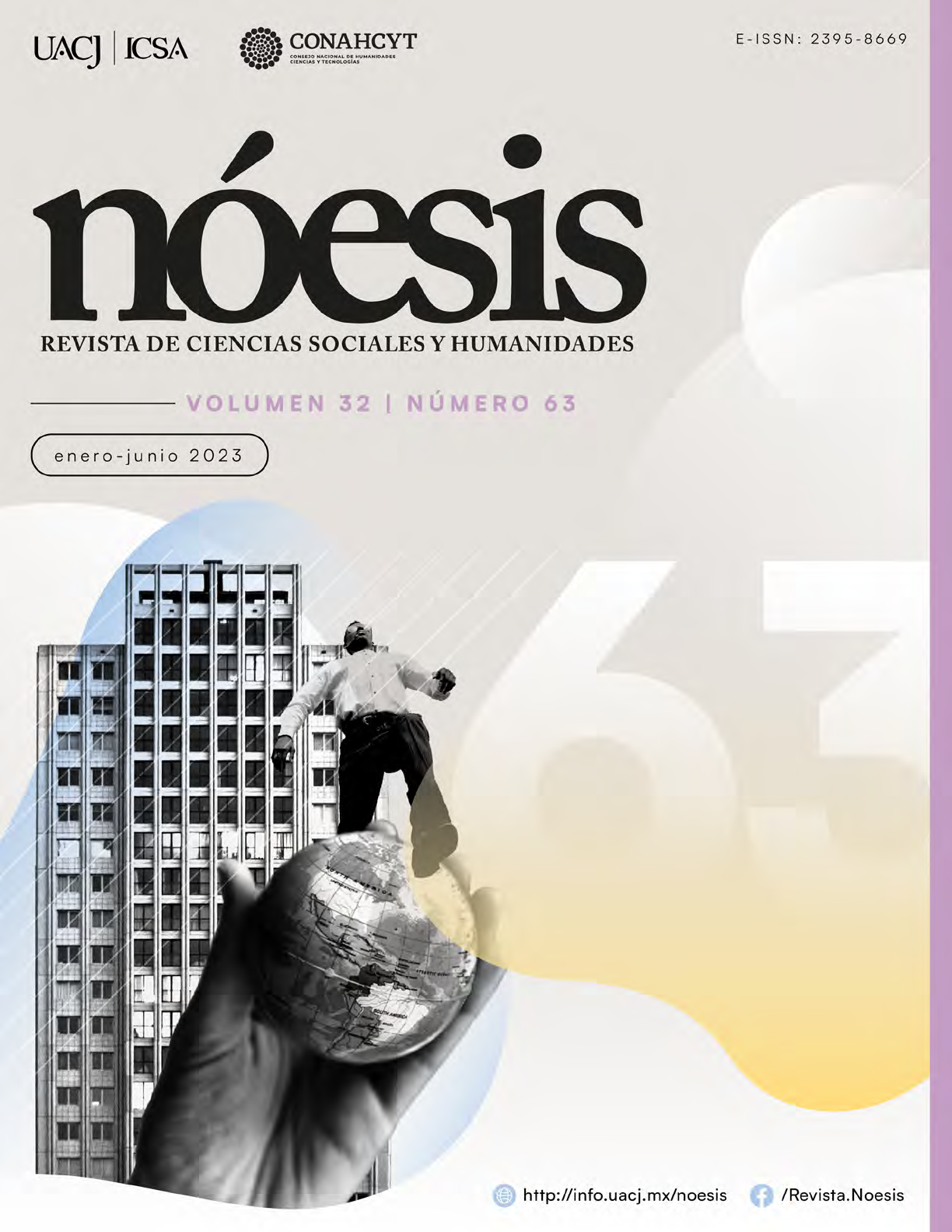Automotive industry in the NAFTA region. An analysis of value added in bilateral exports
Main Article Content
Abstract
The objective of this document is to decompose the gross value of bilateral exports of the automotive sector in the NAFTA region, according to the source and destination of its value added. A multi-country input-output model is utilized. The results indicate that Canada and Mexico are highly dependent on U.S. inputs to produce automotive exports while the U.S. records the highest content of domestic value-added. Besides, the U.S. has formed production chains that supply Canada and Mexico with production inputs that after processing return to the U.S. or are re-exported to third countries, whereas Canada and Mexico are limited to supplying final and intermediate goods to the U.S. Trade between the two countries is minor.
Downloads
Article Details

This work is licensed under a Creative Commons Attribution-NonCommercial-ShareAlike 4.0 International License.
References
Badillo, J. y Rozo, C. (2019). México en la cadena global de valor de la industria automotriz. Economía UNAM, 16(48), 121-145.https://doi.org/10.22201/fe.24488143e.2019.48.492
Bair, J. (2009). Global Commodity Chains, 177-182. Princeton Encyclopedia of the World Economy, Ramkishen Rajan and Kenneth A. Reinert, eds. Princeton University Press.
Baldwin, R. (2006). Multilateralising regionalism: Spaghetti bowls as building blocks on the path to global free trade. National Bureau of Economic Research, Working paper 12545. https://www.nber.org/system/files/working_papers/w12545/w12545.pdf
Baldwin, R. (2012). Global Supply Chains: Why They Emerged, Why They Matter, and Where They Are Going, Fung Global Institute, Working paper 2012-1, https://www.asiaglobalinstitute.hku.hk/storage/app/media/pdf/richard-baldwin.pdf
Baldwin, R.; Ito, T. y Sato, H. (2014). The Smile Curve: Evolving Sources of Value Added in Manufacturing, Joint Research Program Series, IDE-JETRO. https://www.uniba.it/ricerca/dipartimenti/dse/e.g.i/egi2014-papers/ito
Boothe, P. (2013). The Future of Canadian Manufacturing. Learning from Leading Firms: Canadian Auto-Parts Manufacturing. Lawrence National Centre for Policy and Management. (30 de agosto de 2022). https://www.ivey.uwo.ca/media/1066974/3-fom-canadianautoparts.pdf
Dalle, D., Fossati, V. y Lavopa, F. (2013). Política industrial: ¿el eslabón perdido en el debate de las Cadenas Globales de Valor? Revista Argentina de Economía Internacional, 2, 3-16, http://www.cei.gov.ar/userfiles/nota1_0.pdf
Carbajal, Y. y Del Moral, L. E. (2014). El desempeño del sector automotriz en México en la era TLCAN. Un análisis a 20 años. Paradigma Económico, 6(2), 95-126. https://paradigmaeconomico.uaemex.mx/article/view/4796
Calderón, Vázquez y López (2017). Evaluación de la política industrial durante el periodo de apertura económica en México. Nóesis Revista de Ciencias Sociales y Humanidades, 28(55), 162-185. http://dx.doi.org/10.20983/noesis.2019.1.8
Campos, H. y Rodil, O. (2021). Las dos caras de la inserción de México en la cadena de valor automotriz: dimensión económica e impacto ambiental. El Trimestre Económico, 88(352), 1153-1187. https://doi.org/10.20430/ete.v88i352.1237
Crossa, M. y Ebner, N. (2020). Automotive global value chains in Mexico: a mirage of development? Third World Quarterly, 41(7), 1218-1239. https://doi.org/10.1080/01436597.2020.1761252
Johnson R. y Noguera, G. (2012). Fragmentation and trade in value added over four decades. National Bureau of Economic Research, Working paper 18186, 1-62. https://www.nber.org/papers/w18186
Koopman, R., Powers, Z. Wang, Z y Wei, S. (2010). Give credit where credit is due: Tracing Value Added in Global Production Chains. National Bureau of Economic Research, Working Paper No. 16426 https://www.nber.org/system/files/working_papers/w16426/w16426.pdf
Koopman, R., Wang, Z. y Wei, S. (2014). Tracing Value-Added and Double Counting in Gross Exports. American Economic Review, 104(2), 459-94. https//doi.org/10.1257/aer.104.2.459
Lampón, J., Cabanelas, P. y Delgado, J. (2018). Claves en la evolución de México dentro de la cadena de valor global de la industria de autopartes. El caso del Bajío. El Trimestre Económico, 85(229), 483-514, https://doi.org/10.20430/ete.v85i339.259
Minian, I. (2009). Nuevamente sobre la segmentación internacional de la producción. EconomíaUNAM, 6(17), 46-68. http://www.revistas.unam.mx/index.php/ecu/article/view/2976/2535
Miroudot, S. y Ming, Y. (2019). Investigating double counting terms in the value-added decomposition of gross exports. MPRA, Paper No. 93877 https://mpra.ub.uni-muenchen.de/95437/1/MPRA_paper_95437.pdf
Murillo, B. (2020). México: estructura productiva y penetración de las importaciones intermedias, 2003 y 2013. Revista Finanzas y Política Económica, 12(2), 403-430. https://doi.org/10.14718/revfinanzpolitecon.v12.n2.2020.3336
Murillo, B. (2022). Valor agregado y cadenas globales de las exportaciones entre México, Estados Unidos y Canadá. Problemas Del Desarrollo. Revista Latinoamericana De Economía, 53(210), 39-63. https://doi.org/10.22201/iiec.20078951e.2022.210.69822
Murillo, B., Carbajal, Y. y De Jesús, L. (2022). Valor agregado en las exportaciones manufactureras del TLCAN, 2005, 2010 y 2015. Un análisis por subsector. Análisis Económico, 38(95), http://www.analisiseconomico.azc.uam.mx/index.php/rae/issue/archive
OCDE (2018). Inter-Country Input-Output Tables, 2018 edition. Organización para la Cooperación y el Desarrollo Económicos. http://oe.cd/icio
OICA (2021). Estadísticas de producción. Organización Internacional de Fabricantes de Vehículos Motorizados. https://www.oica.net/category/production-statistics/2021-statistics/
Secretaría de Economía (2021). Sistema de Consulta de Información Estadística por País. Secretaría de Economía, http://www.economia-snci.gob.mx/sic_php/pages/estadisticas/
Stehrer, R. (2013). Accounting relations in bilateral value-added trade. Wiener Institut für Internationale Wirtschaftsvergleiche, Working paper 101, https://wiiw.ac.at/accounting-relations-in-bilateral-value-added-trade-dlp-3021.pdf
Wang, Z., Wei, S., Yu, X. y Zhu, K. (2017). Measures of Participation in Global Value Chains and Global Business Cycles. National Bureau of Economic Research, Working Paper No. 23222, https://www.nber.org/system/files/working_papers/w23222/w23222.pdf
Xiao, H., Meng, B. y Li, S. (2020) Are global value chains truly global? Economic Systems Research, 32(4), 540-564, https://doi.org/10.1080/09535314.2020.17836

